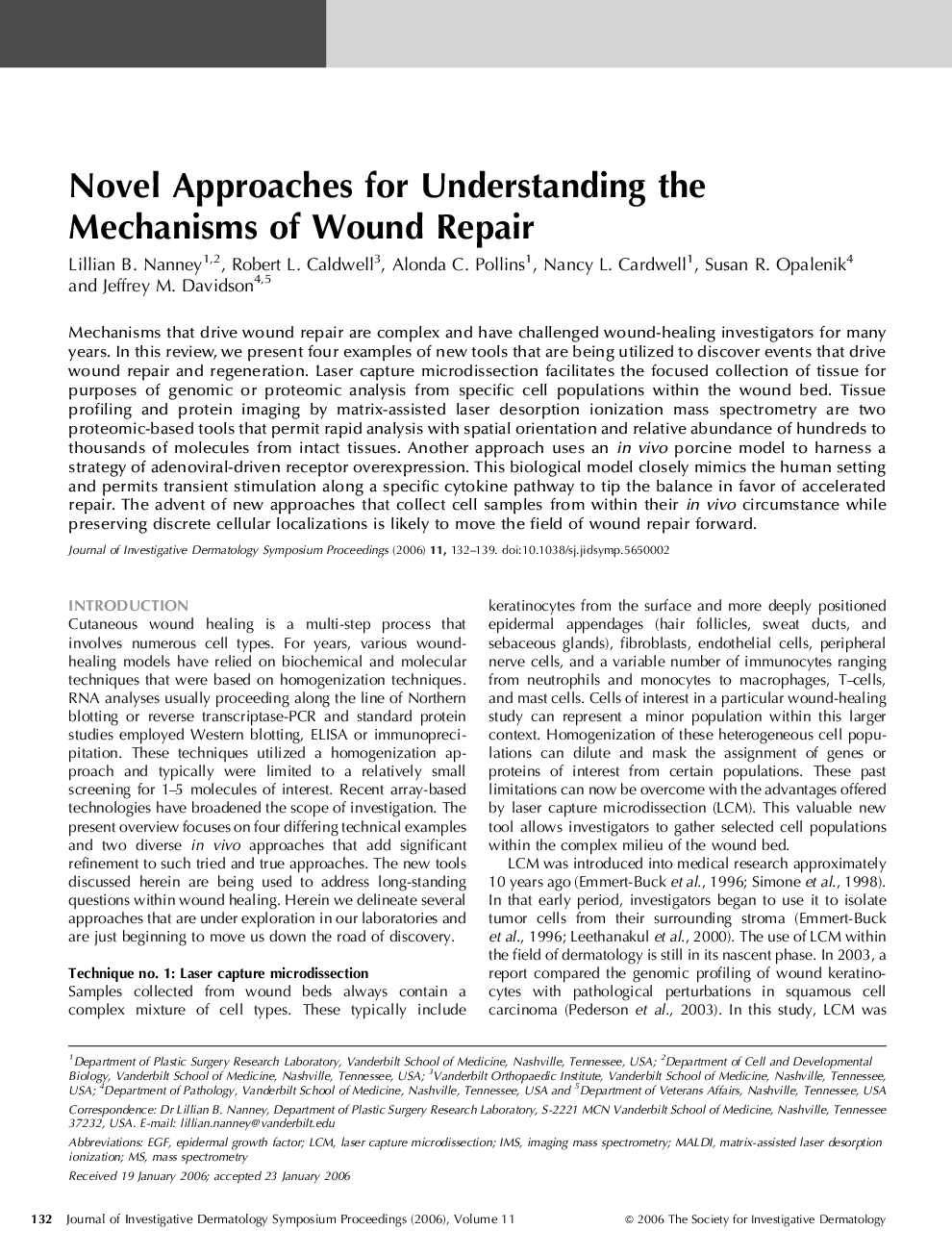| Article ID | Journal | Published Year | Pages | File Type |
|---|---|---|---|---|
| 3219023 | Journal of Investigative Dermatology Symposium Proceedings | 2006 | 8 Pages |
Mechanisms that drive wound repair are complex and have challenged wound-healing investigators for many years. In this review, we present four examples of new tools that are being utilized to discover events that drive wound repair and regeneration. Laser capture microdissection facilitates the focused collection of tissue for purposes of genomic or proteomic analysis from specific cell populations within the wound bed. Tissue profiling and protein imaging by matrix-assisted laser desorption ionization mass spectrometry are two proteomic-based tools that permit rapid analysis with spatial orientation and relative abundance of hundreds to thousands of molecules from intact tissues. Another approach uses an in vivo porcine model to harness a strategy of adenoviral-driven receptor overexpression. This biological model closely mimics the human setting and permits transient stimulation along a specific cytokine pathway to tip the balance in favor of accelerated repair. The advent of new approaches that collect cell samples from within their in vivo circumstance while preserving discrete cellular localizations is likely to move the field of wound repair forward.
